An old saw blade has sat on architect Sun Chi-jung’s (孫啟榕) office desk for over a decade.
He found it lodged in a cypress column of a Japanese-era dormitory in Taipei he was tasked to preserve, during the height of a struggle between preservationists and developers who were trying to destroy these houses that sat on prime real estate.
“This is to remind myself to never, never let something like this happen again,” Sun says emphatically.
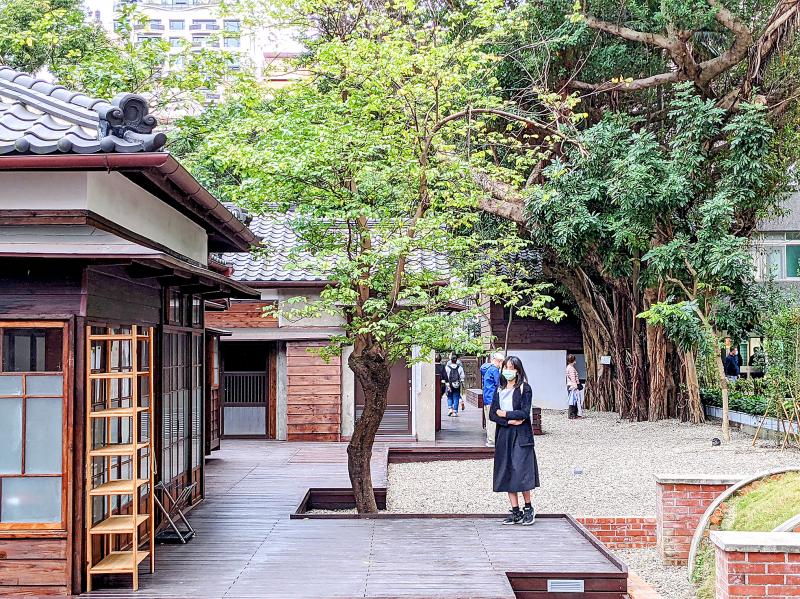
Photo: Han Cheung, Taipei Times
Today, Sun proudly shows visitors what has become of his initial efforts to preserve what is commonly known as the Qidong Street (齊東街) Japanese dorms, one of the best-preserved clusters of such buildings in Taipei. The latest to open to the public is the Taiwan Literature Base (台灣文學基地), launched in December last year.
Sun is responsible for two of the seven buildings in the Literature Base and the additional two behind it that make up the Taipei Qin Hall (台北琴道館) and the Taipei Calligraphy and Painting Garden (台北書畫院). His passion for saving the past is evident as he takes me on an hour-long tour of the area.
Sun repeatedly mentions how grateful he is to be able to participate in this project, and rattles off a list of names that made it possible. But one woman receives particular attention: Chu-Chen Pao-kuei (褚陳寶貴), the housewife-turned-activist and community organizer who spearheaded the charge to save these buildings before Sun came on board.
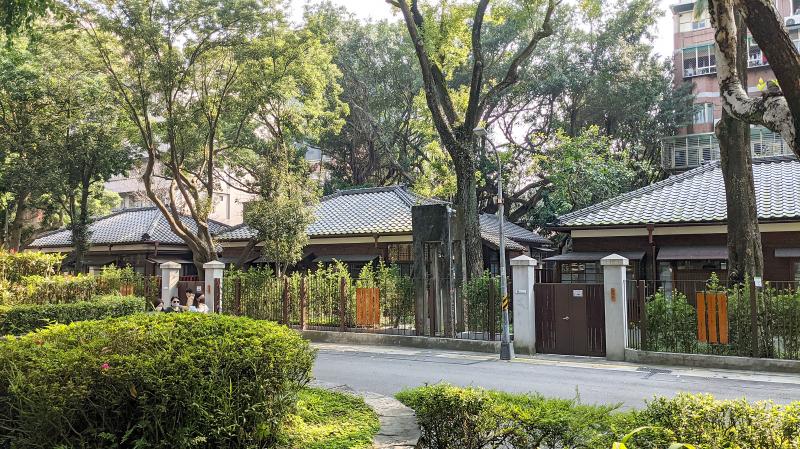
Photo: Han Cheung, Taipei Times
“If not for Chu-Chen Pao-kuei, this place wouldn’t be here,” Sun says.
CALL TO ACTION
I meet Chu-Chen at the Literature Base, where she speaks at length about the area’s history, civic engagement, community building as well as historic and environmental preservation.
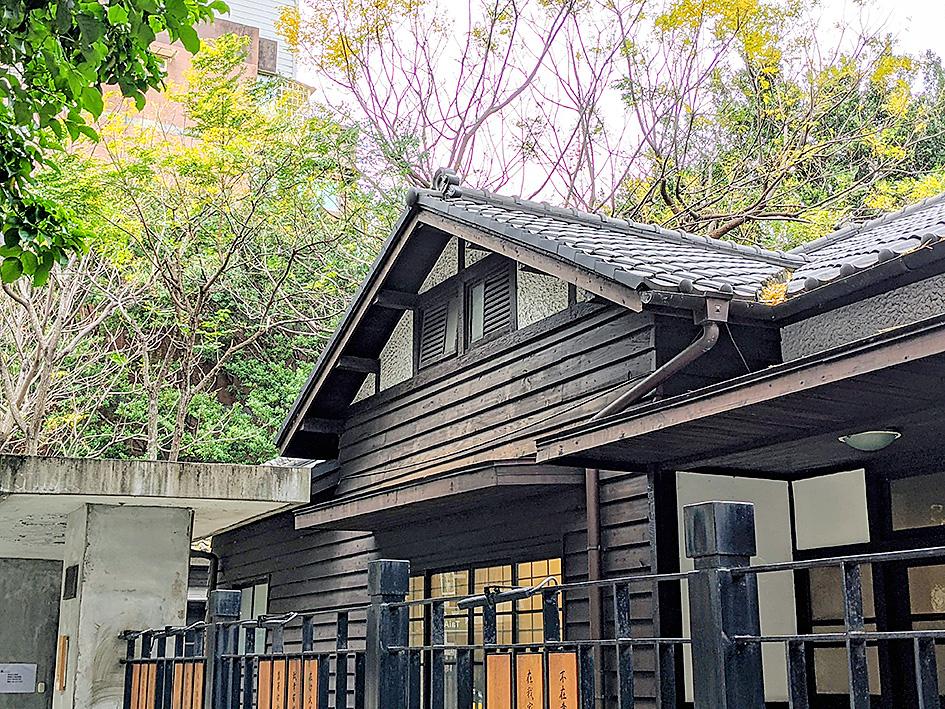
Photo: Han Cheung, Taipei Times
“I didn’t know any of this stuff before,” she says. “I was just a very ordinary housewife. Now that I look back, I have no idea where my determination came from.”
These days, she’s no longer as involved as she is busy taking care of her husband who suffered a stroke, but she’s glad that young people are now helping run the Literature Base.
“The most important thing is to utilize the space meaningfully,” she says. “We’ve managed to preserve this beautiful place, but we need to attract visitors for it to be sustainable. That’s the task of the younger generation, and I fully support whatever they do.”
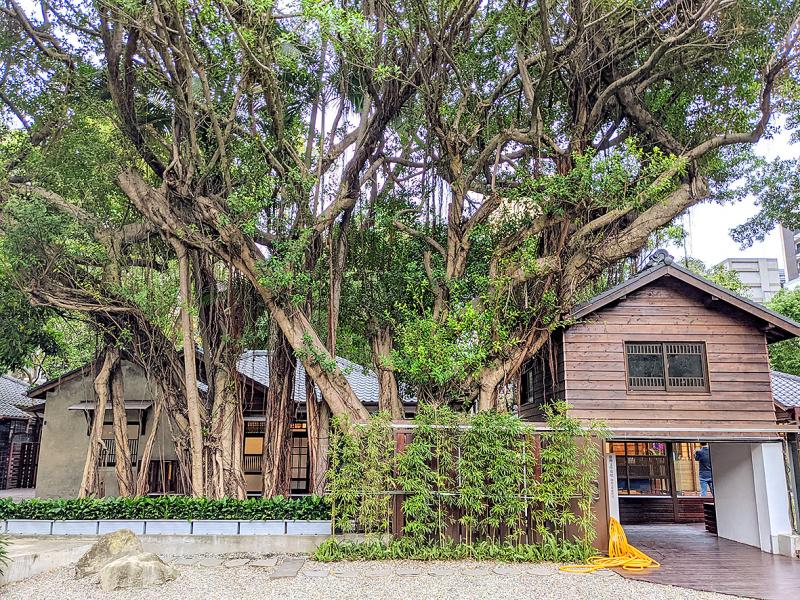
Photo: Han Cheung, Taipei Times
Qidong Street has been active since the Qing Dynasty as a major throughway, and when the Japanese arrived, they built many traditional-style dorms in the neighborhood to house officials and civil servants. Surviving structures can be found scattered through the area, I detail many of them in a walking tour article published on Feb. 3.
After World War II, the Qidong Street dorms, mostly built between 1920 and 1940, housed Bank of Taiwan staff and other government officials. As Taipei’s development pushed eastward, the land here became immensely valuable real estate, and the bank sold it to developers around 2000.
Chu-Chen says when she heard that the whole block could be razed, the only thought on her mind was to “save the old trees.”
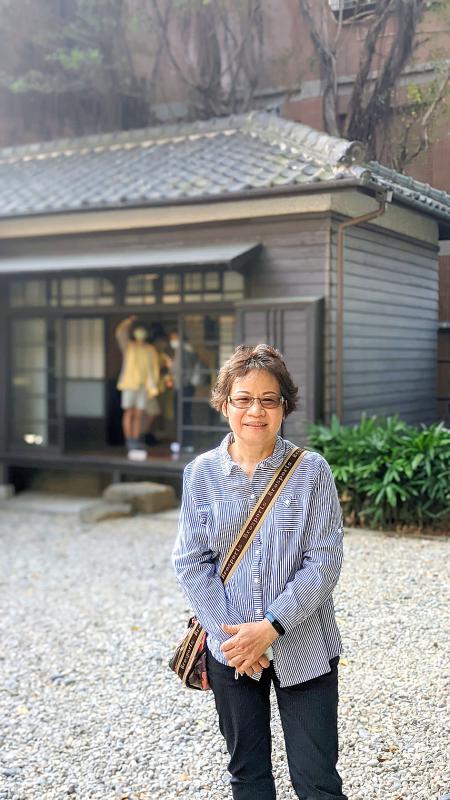
Photo: Han Cheung, Taipei Times
“I just wanted to continue living in a place where I would be woken up by the sounds of birds and insects in the morning,” she says. Her appreciation for the dorms came soon after.
Chu-Chen rallied her neighbors and founded the Qidong Street Cultural and History Office (齊東街文史工作室) to protect the dorms, and enrolled in community planning classes to learn how to carry out the out the fight.
The first demolition crew appeared in December 2002, but the residents banded together and managed to stop them before they got too far.
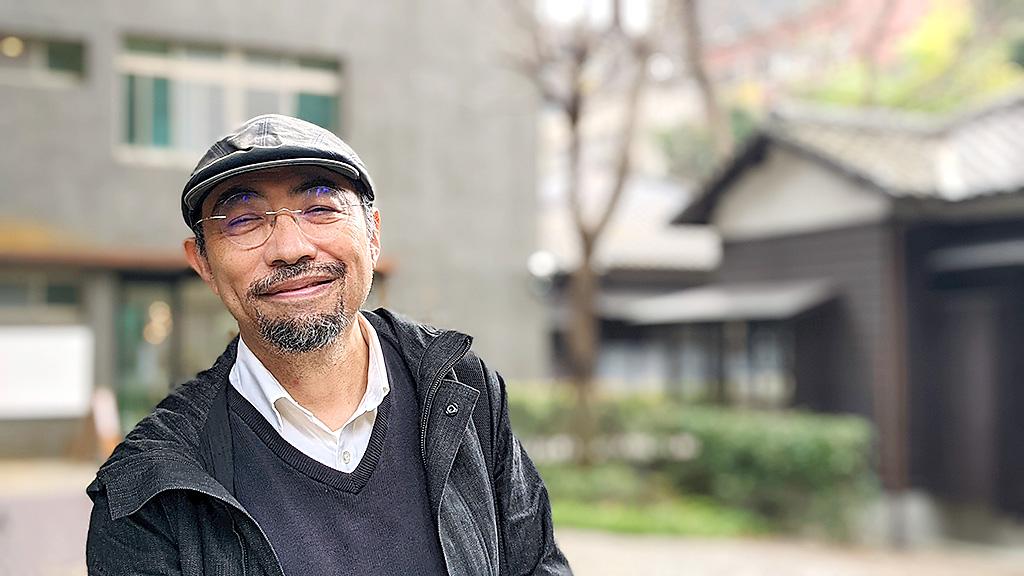
Photo: Han Cheung, Taipei Times
MIDNIGHT DEMOLITION
The following spring, the Taipei City Department of Cultural Affairs agreed to protect the cluster of dorms, but even that didn’t stop the developers. The night before the buildings were to officially obtain their historic status, workers arrived in the middle of the night and completely flattened one of them.
As the vandalism continued, a furious Liao Hsien-hao (廖咸浩), who had just assumed his post as the city’s head of cultural affairs, personally arrived to put up notices and installed a metal security booth on the street.
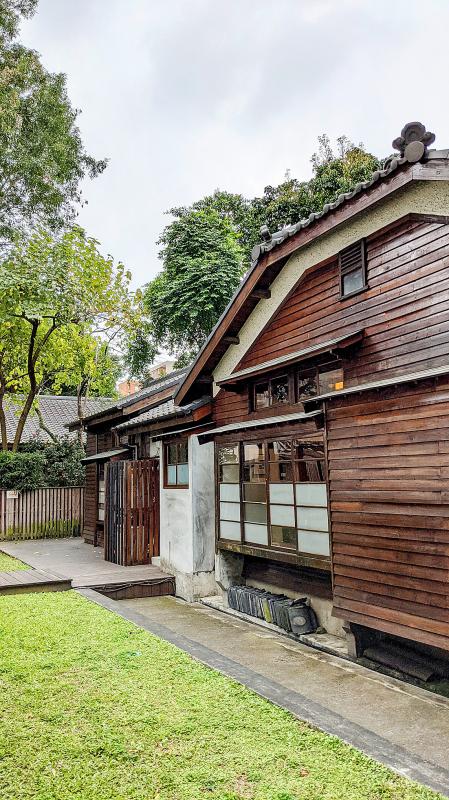
Photo: Han Cheung, Taipei Times
Sun hopes that the city preserves the booth within the Literature Base. Even though it has no historic value, he says it is a testament to the struggle that happened here.
“It witnessed our determination to protect our cultural heritage,” he says.
Meanwhile, Chu-Chen launched a series of neighborhood classes for both adults and children to boost community cohesion. She needed strength in numbers to resist the threats of the developers, and she also wanted more locals to understand how precious these trees and dorms were. Whatever the subject was, whether it be yoga, harmonica, art or personal development, it would always include material about the neighborhood.
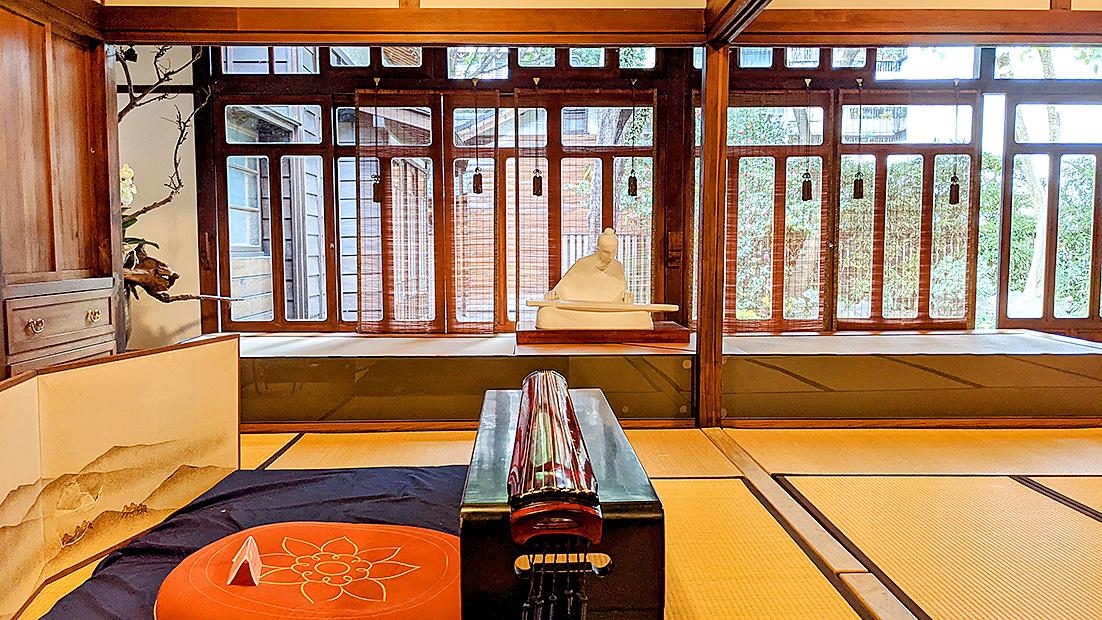
Photo: Han Cheung, Taipei Times
Many of these classes continue to this day. They also collected and recorded the history of this area and held exhibitions in the restored dorms. Chu-Chen says she has lost count of how many historic tours she’s led. Their efforts are on display at the Literature Base’s main exhibition hall.
Sun says his motivation is simple: he was fortunate enough to receive a good education and become an architect, and he wanted to give back by speaking for the voiceless.
“These include the trees, the buildings and the neighborhood mothers who love this place but don’t know how to save it,” he says.
In 2013, the first two buildings that he restored opened to the public. The following year, the Literature Base’s precursor, the Qidong Poetry Salon (齊東詩舍) also opened. Sun lost the bid to fix the remaining buildings to Hsu Po-yuan (許伯元), but speaks glowingly of Hsu’s work.
He gets emotional when he talks about other buildings that have been lost.
“I’m already 56, and there’s just so much more I can do,” he says. “But what I can’t do, my students can do. If they can’t, their students can try. We need to preserve what we can for future generations, as our cultural heritage belongs to them. How can we face the next generation if we destroy everything now and build high rises in their place?”

The People’s Republic of China (PRC) last week offered us a glimpse of the violence it plans against Taiwan, with two days of blockade drills conducted around the nation and live-fire exercises not far away in the East China Sea. The PRC said it had practiced hitting “simulated targets of key ports and energy facilities.” Taiwan confirmed on Thursday that PRC Coast Guard ships were directed by the its Eastern Theater Command, meaning that they are assumed to be military assets in a confrontation. Because of this, the number of assets available to the PRC navy is far, far bigger

The 1990s were a turbulent time for the Chinese Nationalist Party’s (KMT) patronage factions. For a look at how they formed, check out the March 2 “Deep Dives.” In the boom years of the 1980s and 1990s the factions amassed fortunes from corruption, access to the levers of local government and prime access to property. They also moved into industries like construction and the gravel business, devastating river ecosystems while the governments they controlled looked the other way. By this period, the factions had largely carved out geographical feifdoms in the local jurisdictions the national KMT restrained them to. For example,

The remains of this Japanese-era trail designed to protect the camphor industry make for a scenic day-hike, a fascinating overnight hike or a challenging multi-day adventure Maolin District (茂林) in Kaohsiung is well known for beautiful roadside scenery, waterfalls, the annual butterfly migration and indigenous culture. A lesser known but worthwhile destination here lies along the very top of the valley: the Liugui Security Path (六龜警備道). This relic of the Japanese era once isolated the Maolin valley from the outside world but now serves to draw tourists in. The path originally ran for about 50km, but not all of this trail is still easily walkable. The nicest section for a simple day hike is the heavily trafficked southern section above Maolin and Wanshan (萬山) villages. Remains of
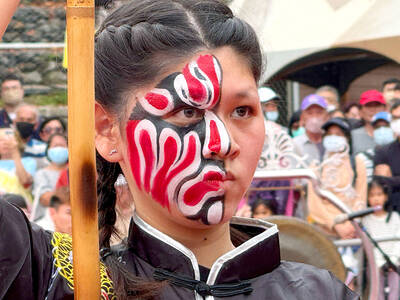
Shunxian Temple (順賢宮) is luxurious. Massive, exquisitely ornamented, in pristine condition and yet varnished by the passing of time. General manager Huang Wen-jeng (黃文正) points to a ceiling in a little anteroom: a splendid painting of a tiger stares at us from above. Wherever you walk, his eyes seem riveted on you. “When you pray or when you tribute money, he is still there, looking at you,” he says. But the tiger isn’t threatening — indeed, it’s there to protect locals. Not that they may need it because Neimen District (內門) in Kaohsiung has a martial tradition dating back centuries. On